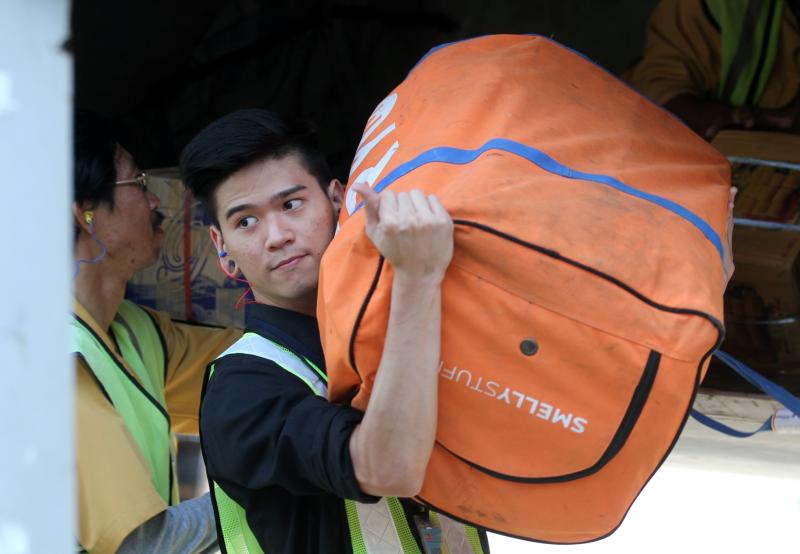It is not easy being an everyday hero.
The next time you complain about your job – while sipping some fancy coffee in an air-conditioned room, think about those who have it hard. Real hard.
As part of #IkonEveryday, a series by R.AGE and the Government Transformation Programme (GTP), our writers had the opportunity to find out just how some of our cities’ unsung heroes go about solving our #FirstWorldProblems, and boy were they difficult.
They tried these heroes’ jobs for a day and here are their stories. Happy Malaysia Day, everyone!
You can also check out the #IkonEveryday teaservideos on YouTube. This series is iand the full video will be launched on Sept 16n conjunction with Malaysia Day.
—————-
It ain’t heavy, it’s part of the job
Location: Kuala Lumpur International Airport (KLIA), Sepang
Do you ever wonder what happens to your luggage after you’ve checked it in at the airport?
Most of us probably don’t give it much thought, simply waiting impatiently by the baggage carousel in the arrival hall, wondering why it’s taking so long. Well, let’s just say that after I found out what goes down in the baggage handling department, I will never complain again about waiting for my luggage.
Two weeks ago, I was given the opportunity to live a day in the life of an employee working in the baggage handling department at the Kuala Lumpur International Airport (KLIA) as part of the Government Transformation Programme’s (GTP) initiative, #IkonEveryday, to help people see underrated jobs like these in a different light.
I thought I knew what to expect as a baggage handler: just lug heavy baggage around (and probably throw my back out in the process). But I discovered I was wrong.
The process of making sure all belongings return to their owners requires more than physical strength. It requires an eye for detail and the patience to do tedious and repetitive work.
This is how it works: As each plane lands on the tarmac, the baggage handlers will unload the bags – and that works out to up to a tonne of baggage from each plane, 12 planes a day. And that’s not even counting the bigger items in the cargo section of the aircraft!
One of the employees in the baggage handling department, Nazaruddin Hamzah, 41, says that many of his colleagues have been admitted to the hospital because of injuries caused by the daily heavy weightlifting. “One of the common injuries are back injuries, including slipped discs. But I am grateful that the company provides for our medical needs,” he adds.
As the bags are placed on the labyrinthine conveyor belts that wind their way from the back all the way to the arrival halls, each bag is counted and tracked (based on its flight), and directed to the right destination. Although there is a automated system in place to sort out the baggage, a manual system runs concurrently to ensure all luggage is accounted for.
Even without any technical errors, a good amount of time is spent from the moment your bag is unloaded from the plane because of all the counting, tracking, and redirection that is required to get it safely back into your hands.
And, really, it’s better that the time is taken to ensure accuracy because, as Nazaruddin says, “How would you feel if your luggage bag ended up in another country?”
“Although it’s challenging work, in terms of both physical and mental requirements, if we don’t do it well, who will?” he adds. – Kevin Tan



Tell us what you think!